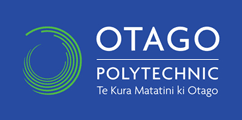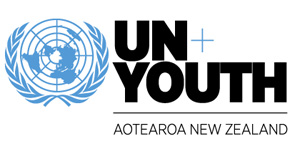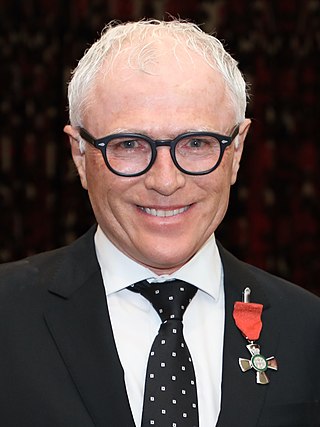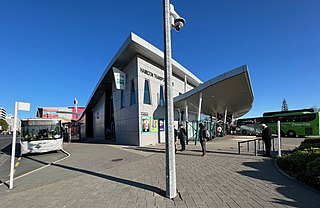Related Research Articles

The Victoria University of Wellington is a public university in Wellington, New Zealand. It was established in 1897 by Act of Parliament, and was a constituent college of the University of New Zealand.

The Rutherford Medal is the most prestigious award offered by the Royal Society of New Zealand, consisting of a medal and prize of $100,000. It is awarded at the request of the New Zealand Government to recognize exceptional contributions to the advancement and promotion of public awareness, knowledge and understanding in addition to eminent research or technological practice by a person or group in any field of science, mathematics, social science, or technology. It is funded by the New Zealand government and awarded annually.

Otago Polytechnic was a public New Zealand tertiary education institute, centred in Dunedin with additional campuses in Cromwell and Auckland. Otago Polytechnic provided career-focused education and training, offering a range of New Zealand accredited postgraduate qualifications, degrees, diplomas and certificates at levels 2–10. In November 2022, it was formally merged into the new national mega polytechnic Te Pūkenga, ending its existence as an independent entity.
The New Zealand Road Code is the official road safety manual for New Zealand published by NZ Transport Agency. It is a guide to safe driving practices and traffic law in New Zealand, and is also the basis for theory and practical driving tests.

Papakura railway station is a railway station in Papakura, New Zealand, on the Southern Line of the Auckland railway network.
Te Ara Ahunga Ora Retirement Commission, is a Crown entity under the New Zealand Crown Entities Act 2004. The Commission provides financial education and information to residents of New Zealand, advises government on retirement income policy, and monitors the effectiveness of the Retirement Villages Act 2003.

Robert Gillies was a 19th-century Member of Parliament in Otago, New Zealand. He was born in Rothesay on the Isle of Bute, Scotland.

UN Youth New Zealand is a non-governmental organisation and a registered charity. Its members are all aged 25 or under or are full-time tertiary students. It is the largest youth-for-youth organisation in New Zealand. Annually, over 3,000 young New Zealanders engage with a UN Youth event.
Open educational resources (OER) are learning materials that reside in the public domain or have been released under an intellectual property license that permits their free use and re-purposing by others. OER policies are adopted by governments, institutions or organisations in support of the creation and use of open content, specifically open educational resources (OER), and related open educational practices.

Michael George Baker is an epidemiologist with the University of Otago. Baker is a member of the New Zealand Food Safety Authority's Academy and of the New Zealand Ministry of Health's Pandemic Influenza Technical Advisory Group (PITAG).

Public transport in Hamilton and the Waikato Region is poorly developed. Only 0.9% of trips were made by bus in 2013/14. This compares with 2.3% nationally, which itself is amongst the lowest modal shares in the world. A Mass Transit Plan aiming to increase public transport's share in Hamilton from 3 to 10% by running services at 10 minute intervals, was to be developed in 2019, but has yet to be funded by NZTA. Waikato, like all other regions, with the exception of Auckland and Wellington, saw falls in use of public transport from 2012. As the map shows, the coverage is sparse and, even of those services which operate daily, most have only 2 or 3 buses a day in each direction. Only Hamilton urban services and those to Huntly run hourly, or more frequently. About 40% of passengers travel on the two routes which run at 15 minute intervals. From Monday 21 February 2022 the less frequent Hamilton buses were cut to hourly, or 2-hourly, due to driver shortages.

Selina Tusitala Marsh is a New Zealand poet and academic, and was the New Zealand Poet Laureate for 2017–2019.

Open access (OA) to academic publications has seen extensive growth in Australia since the first open access university repository was established in 2001 and OA is a fundamental part of the scholarly publishing and research landscape in Australia. There are open access policies at the two major research funders: The National Health and Medical Research Council (NHMRC) and Australian Research Council (ARC) and around half of Australian Universities have an OA policy or statement. Open Access Australasia, the Council of Australian University Librarians (CAUL), and the Australian Library and Information Association (ALIA) are advocates for Open Access and related issues in Australia.

Michael Harlow is a poet, publisher, editor and librettist. A recipient of the Katherine Mansfield Menton Fellowship (1986) and the University of Otago Robert Burns Fellowship (2009), he has twice been a poetry finalist in the New Zealand Book Awards. In 2018 he was awarded the Prime Minister's Award for Literary Achievement, alongside playwright Renée and critic and curator Wystan Curnow Harlow has published 12 books of poetry and one book on writing poetry.
Gamelan orchestral instruments were introduced to New Zealand from Java in 1974. There are several gamelan ensembles in New Zealand and gamelan has influenced many New Zealand composers such as Jack Body and Gareth Farr.
Sarah Foster-Sproull is a New Zealand choreographer, dancer and senior lecturer in dance studies at the University of Auckland.
Entertainment Technology New Zealand (ETNZ) formed in 2002 is a professional association for the design, management, craft and technical performing arts and events community in Aotearoa New Zealand.
Siobhan Harvey is a New Zealand author, editor and creative writing lecturer. She writes poetry, fiction and creative nonfiction. In 2021, she was awarded the Janet Frame Literary Trust Award for Poetry.

Geoffrey Bevan Lorigan is a New Zealand leadership development specialist, mentor, and businessman.
References
- ↑ "NZGOAL (New Zealand Government Open Access and Licensing) framework | ICT.govt.nz". Archived from the original on 4 August 2018. Retrieved 2 August 2018.
- ↑ State Services Commission (2010) "Purpose, New Zealand Government Open Access and Licensing framework (Version 1)" Sections 1 and 2.
- ↑ New Zealand Government (2014) New Zealand Government Open Access and Licensing framework (Version 2). ISBN 978-0-478-10764-7. Retrieved 2 August 2018.
- ↑ New Zealand Government. NZGOAL Software Extension Policy. ISBN 978-0-478-10772-2. Retrieved 2 August 2018
- ↑ New Zealand Government (20 July 2016) "Guidelines unlock govt software for innovation". Retrieved 2 August 2018.
- ↑ New Zealand Government (2011) Declaration on Open and Transparent Government Retrieved 7 August 2018.
- ↑ State Services Commission (2010) "Scope, New Zealand Government Open Access and Licensing framework (Version 1)" Section 7 (c).
- ↑ New Zealand Government (2014) "Status, New Zealand Government Open Access and Licensing framework (Version 2)" Section 8. Status.
- ↑ Council of New Zealand University Librarians (2019) "Statement on Open Scholarship". Retrieved 29 March 2022
- ↑ Mandy Henk (15 April 2013). "The Tasman Declaration on Open Research". Tohatoha. Retrieved 27 April 2021.
- ↑ "Open Policies". Open Access Australasia. Retrieved 27 April 2021.
{{cite web}}: CS1 maint: url-status (link) - ↑ "Open Access Policy". tuwhera.aut.ac.nz. Tuwhera - Auckland University of Technology. Retrieved 27 April 2021.
{{cite web}}: CS1 maint: url-status (link) - ↑ "Open Access Policy". Lincoln University. 21 August 2015. Retrieved 27 April 2021.
{{cite web}}: CS1 maint: url-status (link) - ↑ "Open Access Guidelines". www.auckland.ac.nz. University of Auckland. Retrieved 27 April 2021.
{{cite web}}: CS1 maint: url-status (link) - ↑ Library, University of Canterbury. "Open Access Guidelines". canterbury.libguides.com. Retrieved 27 April 2021.
{{cite web}}: CS1 maint: url-status (link) - ↑ Otago, University of. "Open Access Policy". www.otago.ac.nz. Retrieved 27 April 2021.
- ↑ Otago, University of. "Open Access Guidelines". www.otago.ac.nz. Retrieved 27 April 2021.
- ↑ "Open Access Mandate Guidelines" (PDF). waikato.ac.nz. University of Waikato.
{{cite web}}: CS1 maint: url-status (link) - ↑ "Open Access Policy" (PDF). wgtn.ac.nz. VU Wellington.
{{cite web}}: CS1 maint: url-status (link) - ↑ "Open Access Guidelines" (PDF). wgtn.ac.nz. VU Wellington.
{{cite web}}: CS1 maint: url-status (link) - ↑ "Open Repositories". Open Access Australasia. Retrieved 27 April 2021.
{{cite web}}: CS1 maint: url-status (link) - ↑ "Open Journals". Open Access Australasia. Retrieved 27 April 2021.
{{cite web}}: CS1 maint: url-status (link) - ↑ "Open Educational Resources Collective". 15 September 2021.
- ↑ Fieldsend, Fiona (2015). Reflecting on Open GLAMs in Aotearoa New Zealand. New Zealand: Creative Commons Aotearoa.
- ↑ See, for example, "Attribution 3.0 New Zealand (CC BY 3.0 NZ)".
- ↑ Henk, Mandy. "Creative Commons Licences in Te Reo Māori", 14 July 2015. Retrieved on 2 August 2018.